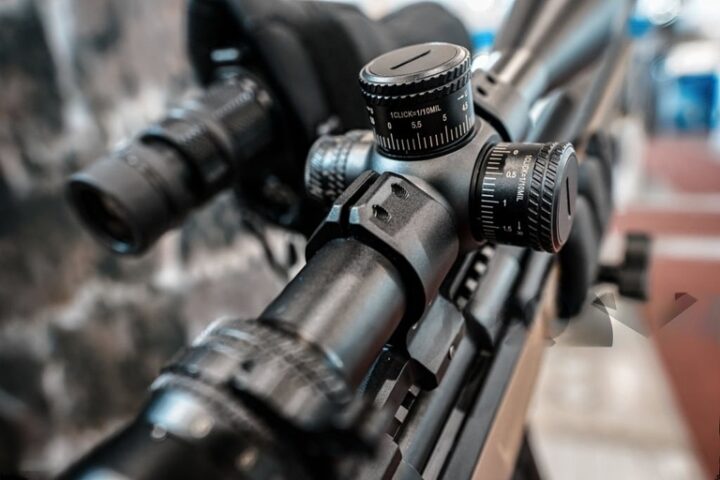Rifle scope MOA meaning
Any shooter who has used a rifle scope has at one time come across the description MOA when reading the description on a rifle scope, or at least has heard it at the shooting range. So, what does MOA mean?
The initials stand for Minute of Angle. It refers to a unit of adjustment inside a rifle scope and one unit represents 1/60th of a degree. The minute nature of this measurement means that the shooter can make precise adjustments with very small changes.
MOA clicks are used to adjust the scope for windage and elevation, well, we also have other units of measurement such as such as MIL/MRAD.
In the technical specification on a rifle scope, you come across descriptions like ¼ MOA clicks. This means that for every click the change in adjustment will be a quarter of the 1/60th of a degree. Therefore, a shooter will have to make 4 clicks to achieve 1MOA.
Why is Shooting Measured in Minutes?
This may seem difficult to comprehend but here we make everything easy. Assume you shoot at a target with your rifle pointed at 45°, towards the sky. Its very obvious the point of impact will be much lower than 45°, probably 38° or much lower than that.

The reason for this, is Force of Gravity. The further a target is, the more force of gravity the bullet has to endure before it hits the target, and this is how degrees relate to the distance.
To simplify this someone came up with Minutes of Angle, inspired by a circular clock, which represents 360°-degrees. in a clock there are 60 minutes round, and each minute is 1/60th of the 360°-degrees. so instead of counting every drop in degrees it’s simply calculated in minutes.
How To Calculate MOA at Target’s Distance
Now that you have understood what is a minute of angle (MOA), it’s utterly pointless if you don’t understand how to use it. How you adjust your scope for MOA depends on a few things which are;
- Distance to the target
- Rifle scope specifications (1/2, ¼, 1/8 MOA turret)
The rule of thumb states that 1MOA corresponds to an angle that subtends 1.047 inches. What this means in simpler language is that if you adjust the scope by 1MOA at 100 yards it shifts the point of impact on the target by approximately 1 inch (1.047). This of course assuming environmental factors do not misbehave.
To cascade this rule of thumb to a longer distance one follows the formula;

Here’s how;
Let’s say you want to adjust your scope by 2 MOA at a distance of 200 yards with 1/4 MOA clicks:
- Adjustment (in inches) = 200 x 2 / 100 = 4 inches.
- Number of clicks = 4 / (1/4) = 16 clicks.
How to Calculate MOA for Bullet Drop
Assuming you do not have a reticle with BDC (Bullet Drop Compensation) you’ll once in a while need to adjust for bullet drop using the turret.
Wait, what is a BDC reticle?
This is a reticle designed to provide holdover points for bullet drops at different distances. The Vortex scopes for example is known for having very good reticles with BDC.
On a BDC reticle, the holdover is given by hash marks that sit below the center crosshair, each calibrated for a specific distance.
The calibrations for the hash marks are made to match specific rifle, ammunition, and ballistic conditions. When using a BDC reticle all you need to do is use the hash mark as a center crosshair depending on the distance to the target when all these conditions are met.
Well, I don’t have a BDC reticle
If you do not have a BDC reticle here’s how you’ll adjust your turret to fire at different distances compensating for bullet drop. Firstly, you need to estimate the expected bullet drop, then use the formula;

Example
Assuming the expected bullet drop is 4 inches and the distance to the target is 200 yards calculate the MOA adjustment required

FAQ
Which is better MOA or MIL?
Well, this is just like different flavors of pizza, the preference depends on the user. However, the MOA is more prevalent in the United States, whereas the MIL calibration is more widely used internationally.
Conclusion
Now that you understand the concept of MOA (minute of angle) and the entire process of applying it, it’s evident that it wasn’t as tough as you anticipated. All you need now is different targets at various distances and elevations for practice, and you’ll be a master at the game.
Related

